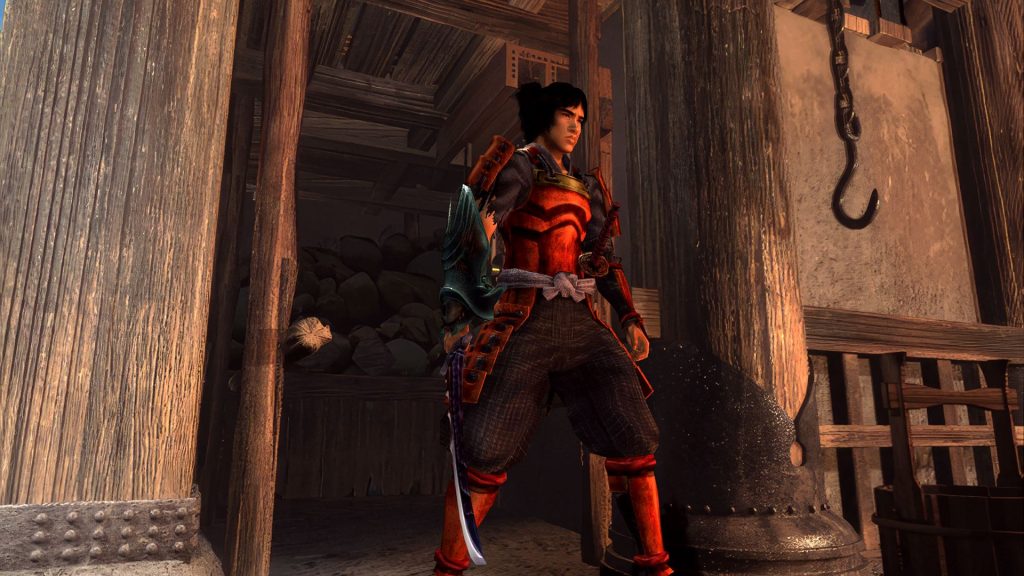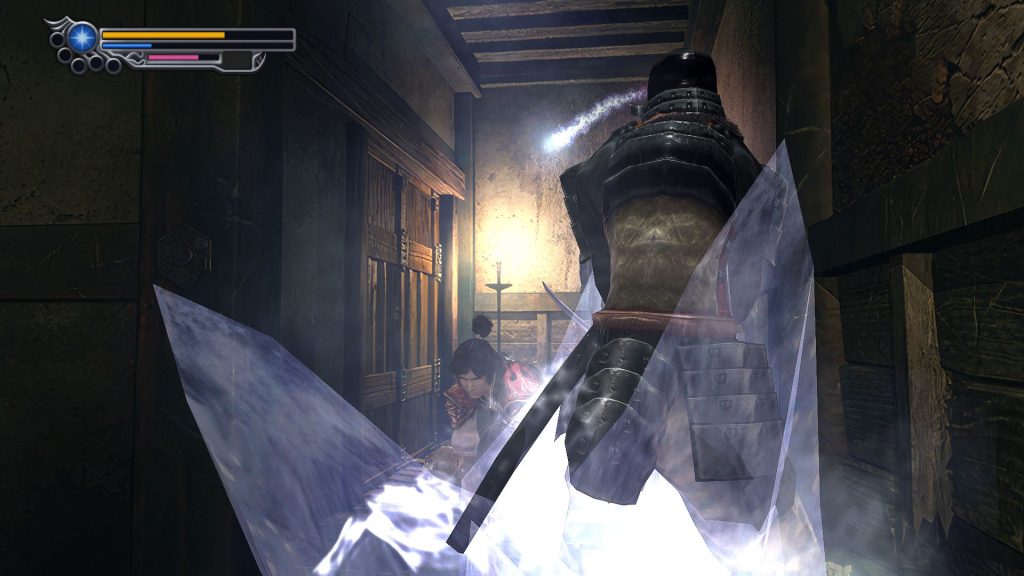
Nestled amongst PS2’s legacy series’, the Resident Evils, the Monster Hunters, and Street Fighters, is Onimusha. The horror-tinged historical action-adventure series is one of the Japan’s outlier franchises, sure, but there’s enough of a cult following for the second in the series – Onimusha 2: Samurai’s Destiny – to warrant a repress. If you’re not sure where to begin; perhaps you’ve never played and are wondering what the fuss is about then stick around as here are fifteen things to know.
This is a remaster
Originally released in 2002, Onimusha 2: Samurai’s Destiny is the series’ second instalment. This remastered sequel – an ample blend of classic horror’s stately pacing, fixed cameras, and environmental puzzles with Souls-like swashbuckling action – comes with sharper graphics, modernised controls, and a handful of quality-of-life improvements, the latter two of which we’ll discuss in greater detail in this feature.
No prior knowledge of series required
Yes, Onimusha 2: Samurai’s Destiny may be a sequel but with a different protagonist to its predecessor plus a standalone story no prior knowledge of 2001’s Onimusha: Warlords is required. This game can be enjoyed whether you’ve played the other games in the series or not. However, if you’re type to prefer at least an understanding of a game’s universe without diving in blind, Onimusha: Warlords received the remaster treatment a few years ago and is playable on PlayStation, Xbox, and Nintendo Switch.
Story

After defeat at the hands of young warrior Samanosuke Akechi, once living warlord turned undead demon king Nobunaga Oda has risen once again to continue his quest to rule the world, ransacking villages and slaughtering any innocent who dares stand in his way. Set in medieval Japan, Onimusha 2: Samurai’s Destiny is a tale of revenge, with player-character Jubei Yagyu determined to cleanse the world of Oda’s presence once again, not just to halt the bloodshed but as personal retribution for Oda eliminating Yagyu’s clansmen.
Jubei Yagyu’s backstory and motivations
Famous for founding the Yagyu Shinkage-ryu, Jubei Yaygu is a master swordsman who, during his revenge mission, learns of his oni heritage; a power which grants him demon slaying ability. Beyond revenge on Oda, his goal is to locate five sacred orbs which, as legends foretell, can save mankind from demonic oppression. When he collects enough demon souls, Yagyu can transform into a powerful oni demon himself.
Four accompanying allies

Accompanying Yagyu are four allies, each possessing unique skills and intriguing backstory, bringing something distinct to the party. They have their own aims leading, sometimes, to in-fighting. Swordswoman Oyu fights alongside Yagyu, but all is not what it seems; behind her beautiful appearance is a mysterious past. Stealth-based ninja Kotaro Fuma is especially distrustful of Oyu, a dark secret defining his outlook. Magoichi Saiga is equally adept with guns as he is with blades, but his rational personality oftentimes finds him making merciless decisions. Master spear wielder Ekei Ankokuji also harbours a grievous past, but for now his debaucherous lifestyle belies his tutelage.
Branching storyline
Depending on the strength of Yagyu’s bond with each of his four companions – indicated by something called “affinity value” – new events and thus different story directions can occur. A means of strengthening ties with a particular character comes via sharing gifts with them. However, Yagyu needs to be considerate as to which present they pass to their ally; the gift must match their temperament. For example, flowers to Oyu are cool, flowers to Saiga is not. The stronger the bond, the more likely Yagyu will have the whole cast of allies to fight alongside him. Inversely, a weak bond leaves him open for betrayal later down the line. All in all, Onimusha 2: Samurai’s Destiny boasts a hundred different events to discover through managing affinity value.
Combat overview
Yagyu is samurai, so as you’d expect he’s a dab hand at swordplay. Blades are his weapon of choice however as the game progresses, he’ll amass a small arsenal of short range, long range, and melee weaponry – spears, bows, hammers, that sort of thing. An important consideration though: oftentimes Yagyu and his crew find themselves scuffling in tight spaces, so special awareness and choosing the correct weapon for the environment are also crucial for success.
Magic power

Throughout Samurai’s Destiny Yagyu can unlock various elemental effects for his weapons via magic powers. One of the first he’ll encounter in-game is the Buraitou, or thunder sword, which allows him to swing a blade charged with lightning. And the elemental effects continue throughout: ice spears, earth hammers, fire-based broadswords, et cetera. When equipped, these elemental effects can be waved at any time, leading to more powerful attacks. They’re upgradeable too, up to three levels.
Issen counters
A quintessential manoeuvre, Issen counters are Onimusha 2’s trademark parries. These function slightly different to what you’re probably used to though. Instead of parrying with the block button players must initiate an attack at the perfect moment to counter an enemy lunge. There’s greater risk here: timing the attack button press with less than surgical precision leaves Yagyu vulnerable. On the flipside, land an Issen perfectly and enemies will perish instantly. Furthermore, Issen counters can be chained together, granting Yagyu a flashy way to down multiple enemies simultaneously.
Souls overview
Another key facet of Onimusha 2: Samurai’s Destiny’s combat is Yagyu’s soul absorbing power. Enemies will release them when defeated, with each colour of orb denoting a specific trait: red orbs, the most common, gift experience points that can be spent upgrading Yagyu’s weapons and armour; yellow orbs restore his health; blue orbs will replenish spent magical ability. The rarest colour – purple – transform Yagyu into his demonic Onimusha state once five are collected, a form whereby he’s as powerful as he is invisible.
Hell mode

Hell mode is a new feature in this remaster of Onimusha 2: Samurai Destiny. Ostensibly a one-hit kill mode, the game advises that this mode is not for the feint of heart. Making health recovering yellow orbs obsolete, should you be adept at the game’s senior ‘critical’ difficulty then you might want to give this a go. It’ll certainly make every encounter an intense struggle to get through.
Quality of life improvements
There’re a handful of quality-of-life improvements present in Onimusha 2’s remaster. An easy mode, for starters, now exists for those who just want to enjoy the story without pushing through any sort of challenge. Cutscenes can now be skipped; great for those who’re replaying to see those hundred unique story events. Auto save has also been added, as has the ability to swap weapons mid-battle without having to trundle through a momentum disturbing menu.
Platforms, release date, price
Onimusha 2: Samurai’s Destiny is releasing to PlayStation 4, Xbox One, Nintendo Switch, and PC via Steam on May 23rd, 2025, and is reasonably priced at $29.99 / $24.99.
Pre-order bonuses

One of Onimusha 2’s most enduring features is Tawo Iwashiro’s exceptional soundtrack. Maybe this is why the game opted to package a small selection of tracks into a pre-order bonus. The Onimusha 2: Orchestra Album Selection Pack contains five orchestral versions of music from the game. A useful item pack is bundled along with the music too, containing herbs, medicines, magic liquids, and red souls. Those who already have a save file for sequel predecessor Onimusha: Warlords can obtain a special outfit for Jubei Yagyu, the Samanosuke outfit, which is based on Samanosuke Akechi, the protagonist of the first game.
PC requirements
As per the game’s Steam listing, minimum PC requirements are as follows: Intel Core i3 8350k or AMD Ryzen3 3200G processor, 8GB RAM, and NVIDIA GeForce GTX 960 or AMD Radeon RX560 GPU. Recommended requirements list the same processors as minimum but up the RAM demand to 16GB with GeForce GTX 1060 or AMD Radeon RX570 GPUs. 25GB storage space is also required. Additionally, monitors will need to be set to at least 60Hz refresh rate else framerates could drop in graphically intense scenes.














